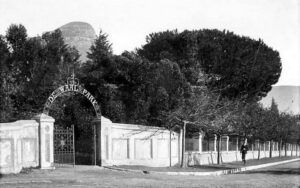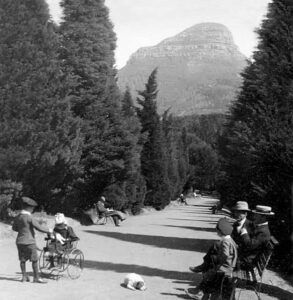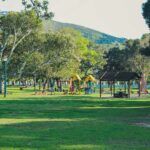De Waal Park
De Waal Park was Cape Town’s first and largest public park located in the heart of the City Bowl, after the Company’s Gardens It was opened in 1895. The land was bought from the Van Breda family who owned the farm Oranjezicht. The land was divided into three parts. The first for the building of two smaller reservoirs and then the Molteno Reservoir which also provided the city with electricity. The land in between formed a natural park. David Christiaan de Waal, who was a city councillor at the time oversaw the planting of the thousands of trees.
As Mayor of Cape Town, 1889 to 1890, he developed the park further and it was opened to the public officially in 1895. Two gates with brick piers and wrought-iron arches in Art Nouveau style at the lower corners and a wall along Camp Street were built in 1899 and the wall was extended up Upper Orange Street in 1900.
The bandstand was built in 1904/5 for the Cape Town Exhibition which was held in Green Point and moved to the park after the exhibition was over. Military bands performed there on Sunday afternoons for many years. In 1952 the park became the venue of the annual Theatrical Garden Party. The Victorian fountain in De Waal Park is a natural artesian well and feeds the Lower Reservoir No. 2 in Oranjezicht. On 22 March 1968, the park was proclaimed a National Monument to be maintained as public gardens. It is now listed as a Provincial Heritage Site.
De Waal Park It is noted for its wide variety of trees. It is popular with dog owners, the dogs play in the pond around the Victorian fountain. It is safe to let them off leash as the park is fenced off from the busy surrounding streets. There is a playground for children. During the summer months, you can enjoy live music concerts.


De Waal park in the late 1800s
Upper Orange Road


